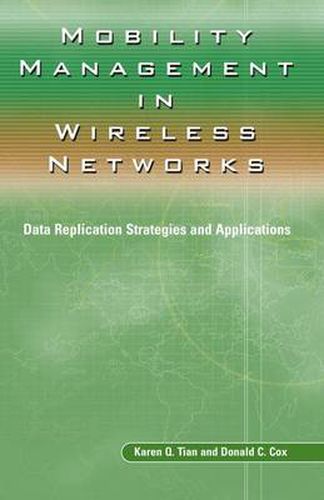Readings Newsletter
Become a Readings Member to make your shopping experience even easier.
Sign in or sign up for free!
You’re not far away from qualifying for FREE standard shipping within Australia
You’ve qualified for FREE standard shipping within Australia
The cart is loading…






This title is printed to order. This book may have been self-published. If so, we cannot guarantee the quality of the content. In the main most books will have gone through the editing process however some may not. We therefore suggest that you be aware of this before ordering this book. If in doubt check either the author or publisher’s details as we are unable to accept any returns unless they are faulty. Please contact us if you have any questions.
In wireless communication systems, the network keeps track of a user’s location through an up-to-date user profile stored in various databases. A user profile contains not only a user’s current location information, but also service information, such as billing and authentication. The cov- age area of an access network is divided into registration areas (RAs), and each RA is associated with a location database. The two basic op- ations in mobility management are location update and location lookup. When a user moves across the boundaries of these RAs, the network updates his location information in the pertinent databases. When a caller places a call using the callee’s identification, the network queries the relevant database(s) to obtain the current location and other service information of the callee. The performance of mobility management can be further enhanced by using replicas of user profiles which may be kept at various locations. Replication techniques make profile information more readily available, thus reducing lookup cost and latency, but to keep these replicas c- sistent and fresh, they must be updated whenever the user profile is updated. The principle of replication is to replicate if the benefit of replication is greater than its overhead. The difficulty, however, lies in accurately measuring the benefit and overhead.
$9.00 standard shipping within Australia
FREE standard shipping within Australia for orders over $100.00
Express & International shipping calculated at checkout
This title is printed to order. This book may have been self-published. If so, we cannot guarantee the quality of the content. In the main most books will have gone through the editing process however some may not. We therefore suggest that you be aware of this before ordering this book. If in doubt check either the author or publisher’s details as we are unable to accept any returns unless they are faulty. Please contact us if you have any questions.
In wireless communication systems, the network keeps track of a user’s location through an up-to-date user profile stored in various databases. A user profile contains not only a user’s current location information, but also service information, such as billing and authentication. The cov- age area of an access network is divided into registration areas (RAs), and each RA is associated with a location database. The two basic op- ations in mobility management are location update and location lookup. When a user moves across the boundaries of these RAs, the network updates his location information in the pertinent databases. When a caller places a call using the callee’s identification, the network queries the relevant database(s) to obtain the current location and other service information of the callee. The performance of mobility management can be further enhanced by using replicas of user profiles which may be kept at various locations. Replication techniques make profile information more readily available, thus reducing lookup cost and latency, but to keep these replicas c- sistent and fresh, they must be updated whenever the user profile is updated. The principle of replication is to replicate if the benefit of replication is greater than its overhead. The difficulty, however, lies in accurately measuring the benefit and overhead.